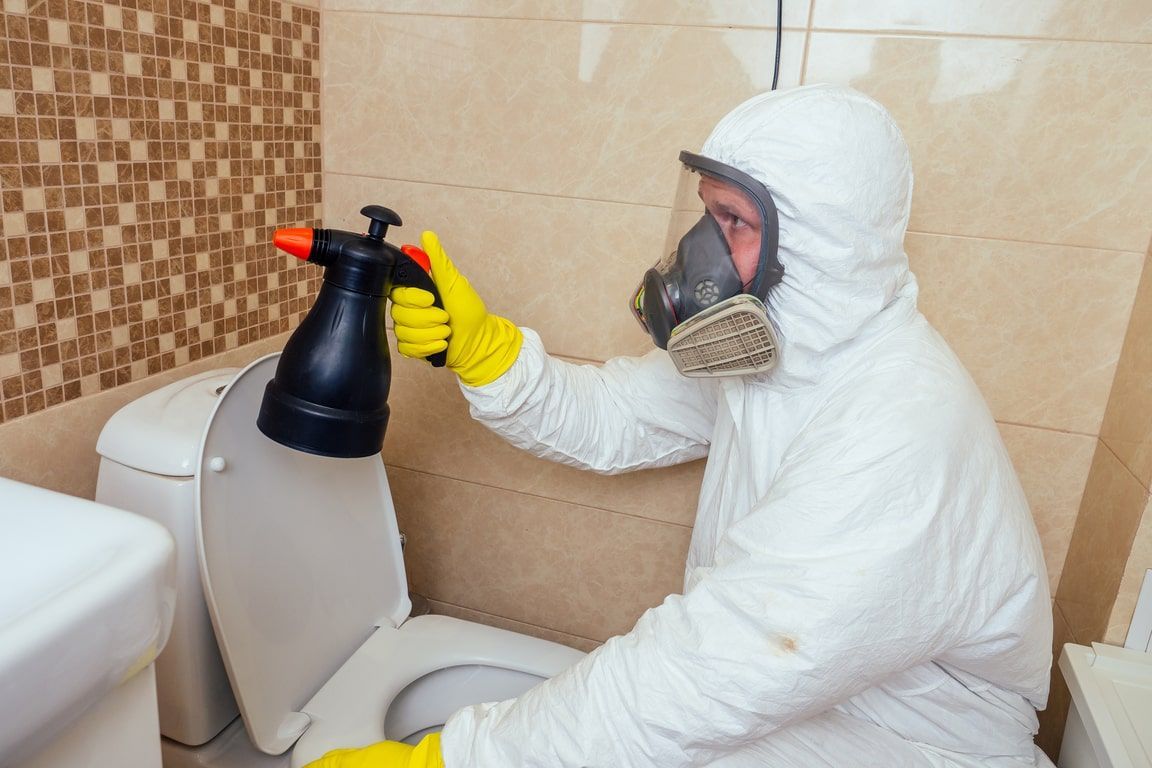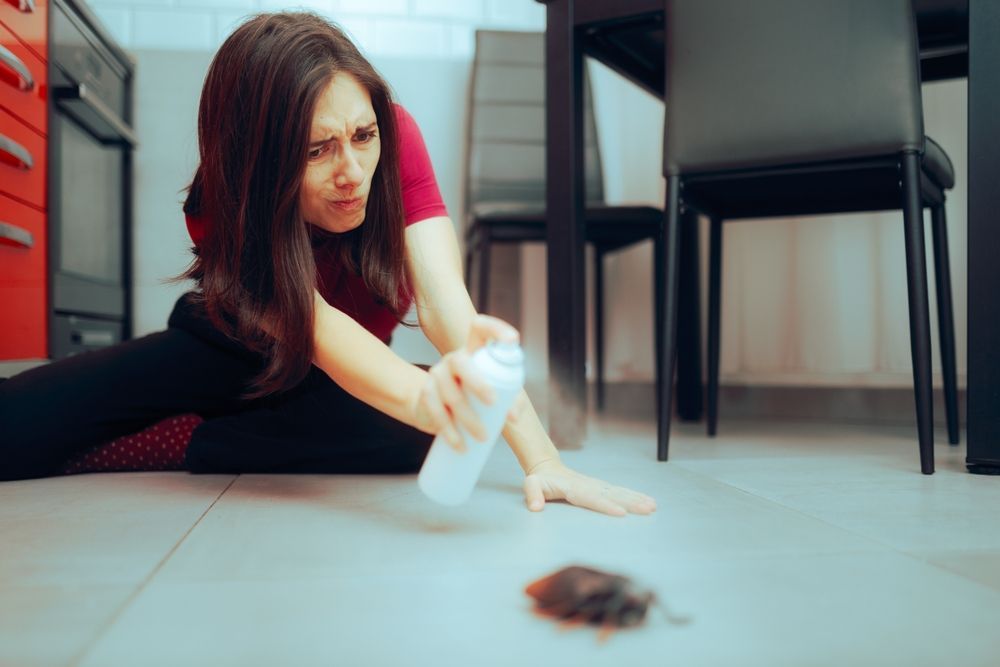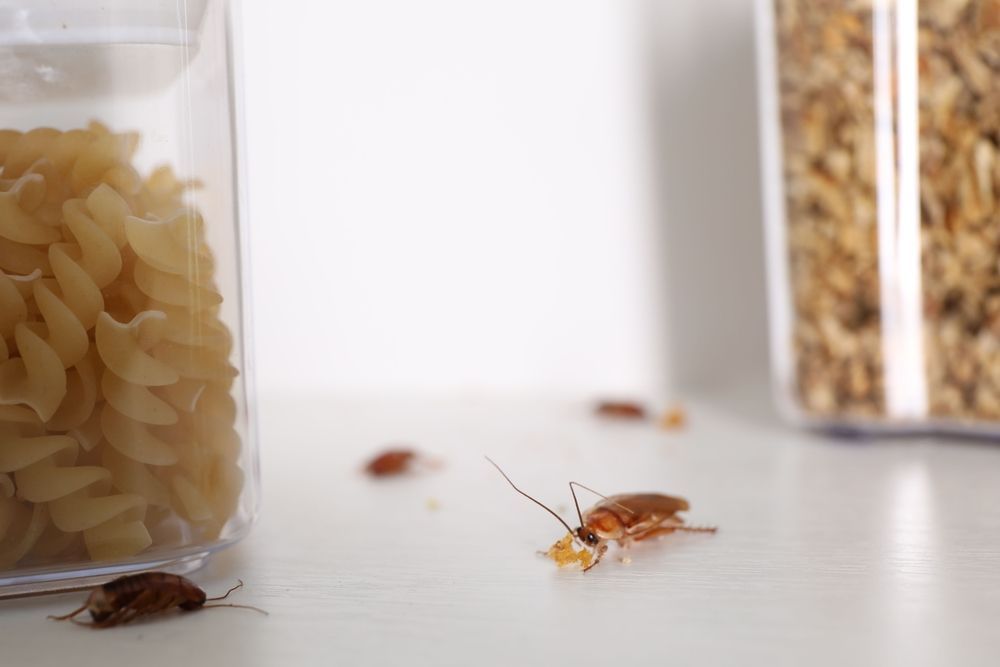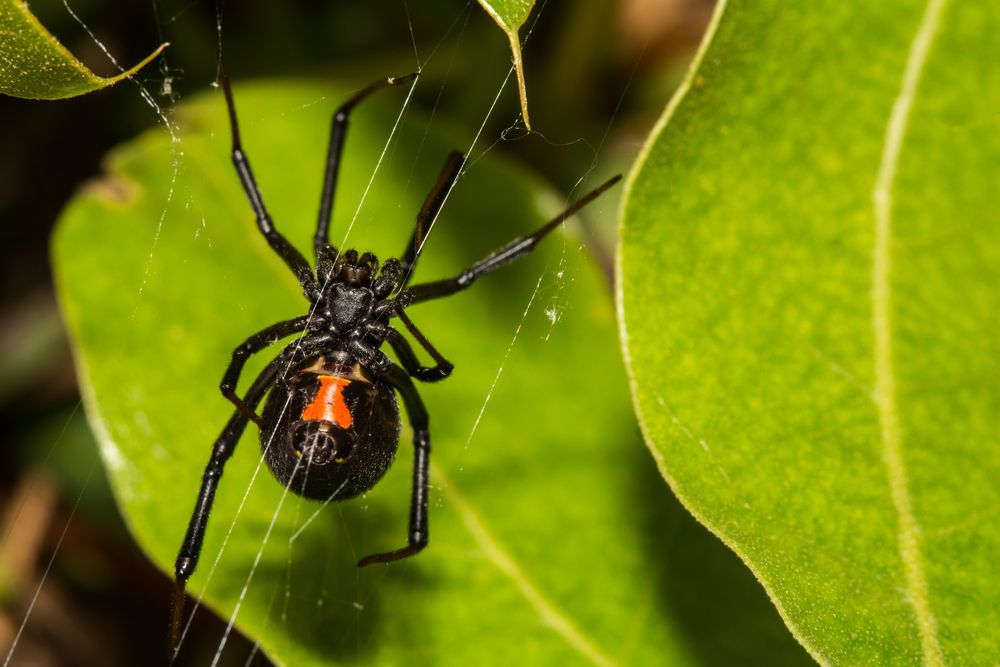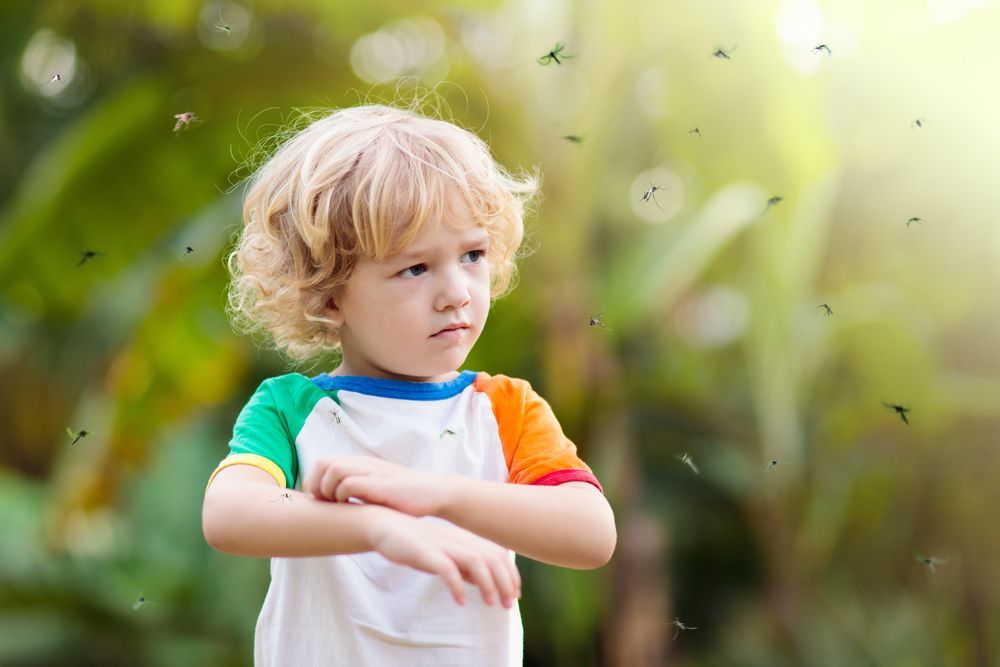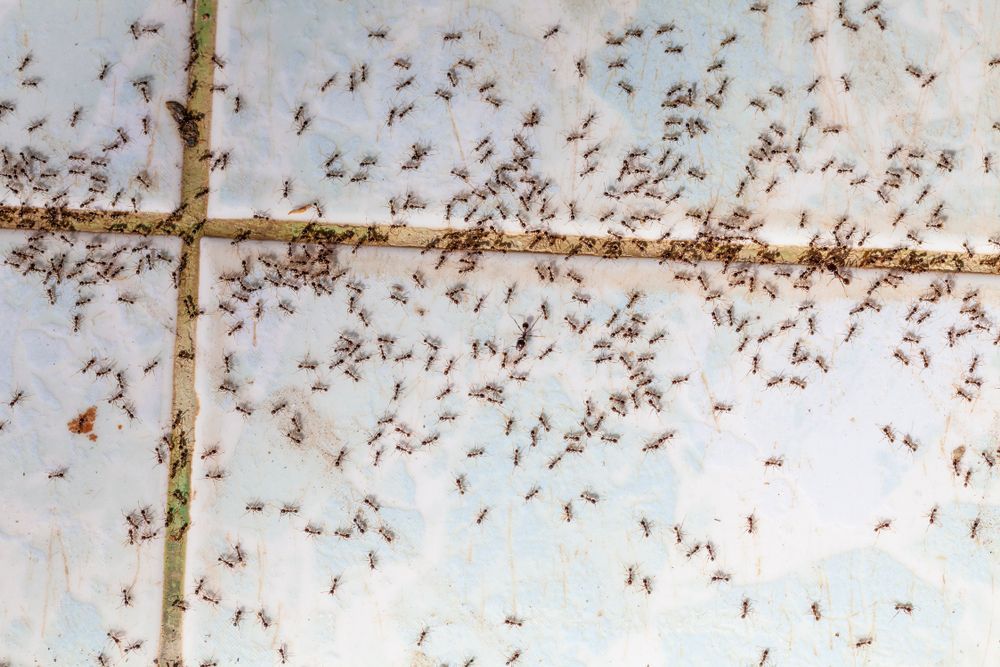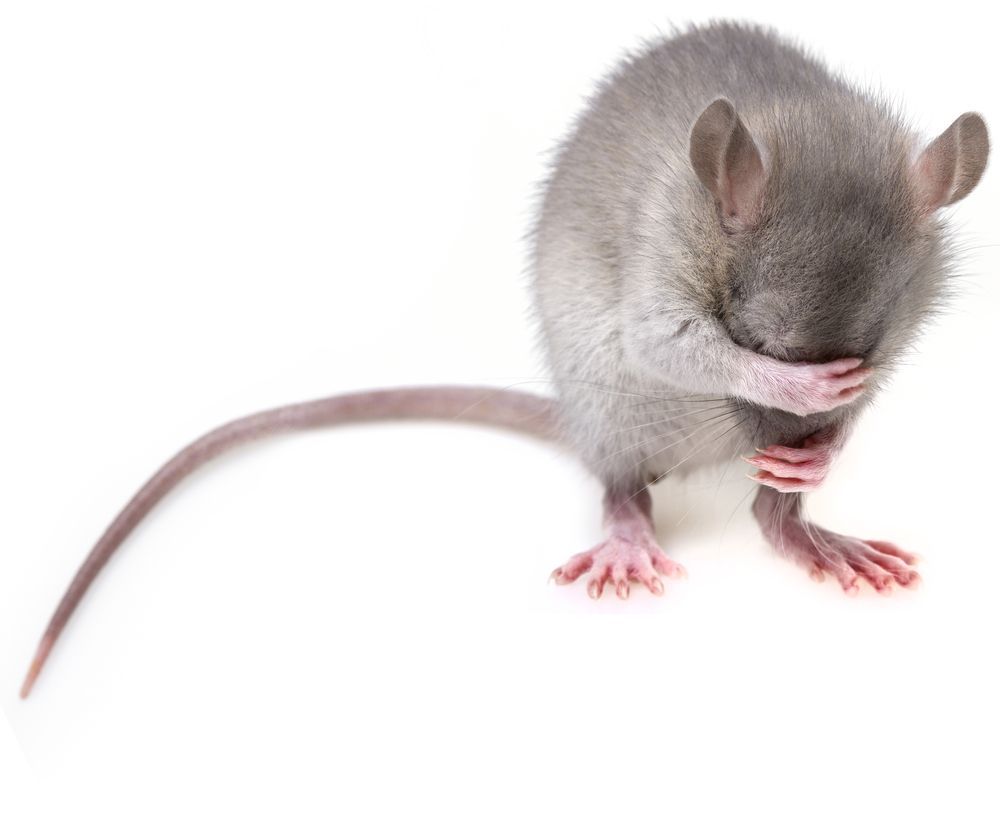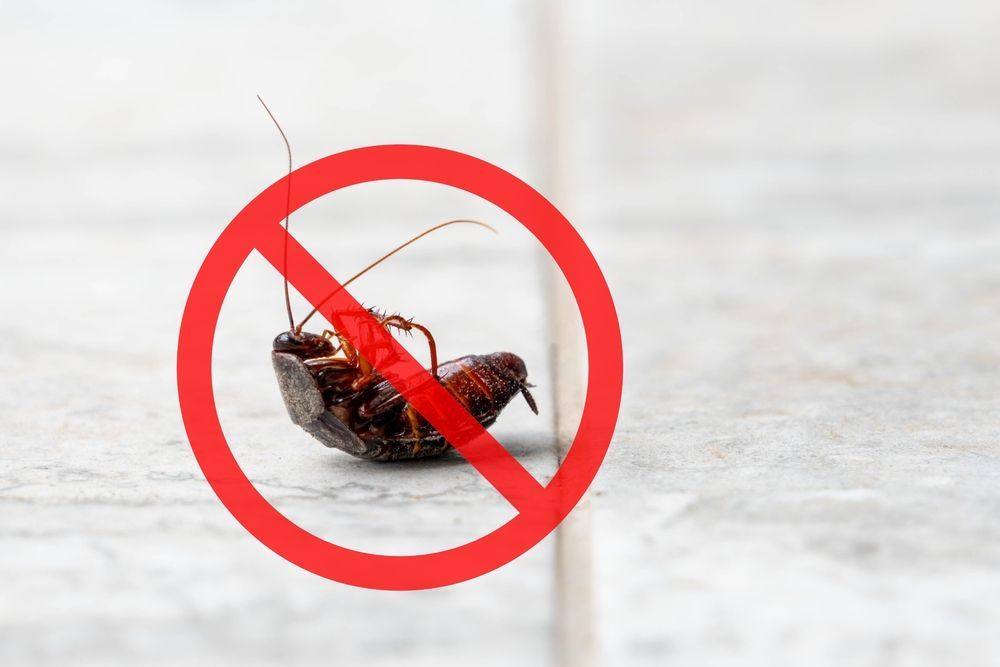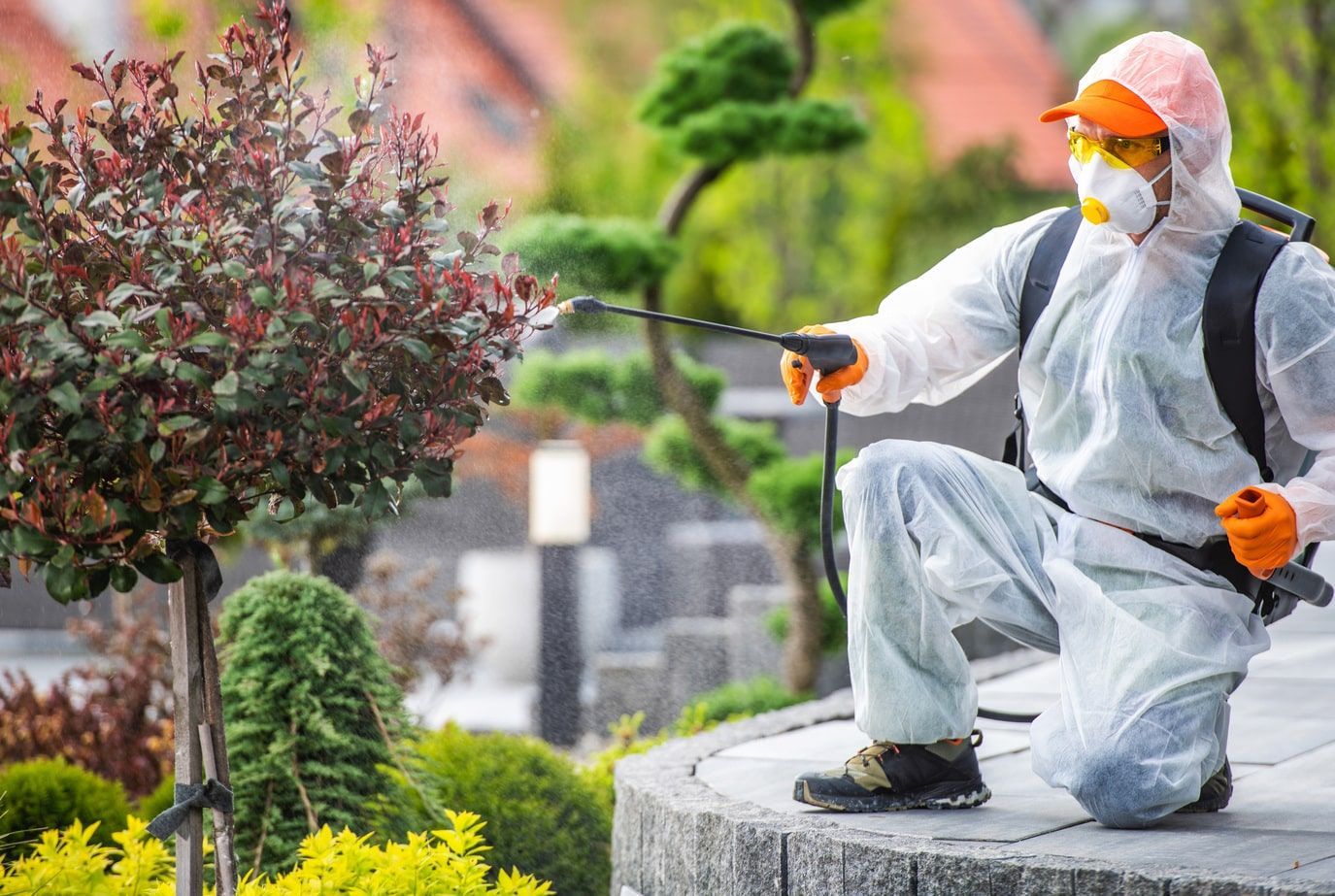Environmentally Friendly Pest Control Methods for Sustainable Living
Importance of Environmentally Friendly Pest Control
Pest control is vital for maintaining a pleasant living environment, but it's important to do so in a way that's safe for both people and flora and fauna. By using environmentally friendly pest control methods, we can sustainably manage pests without harming other living organisms. Additionally, these solutions can be less expensive than traditional methods and reduce the amount of chemicals released into the environment.
The use of pesticide sprays can harm beneficial insects while polluting the surrounding area. Environmentally friendly alternatives include utilizing natural predators, such as certain types of beetles or birds, to naturally control insect populations. Physical traps and deterrents serve as another non-toxic option.
Common household items like garlic, vinegar, or even hot pepper can also drive pests away in varied ways. These remedies offer harmless ways of removing unwanted guests without releasing harmful chemicals into the air.
Krizen Pest Control has been providing safe and effective solutions to customers for several years now. Their approach is customer-centric with an emphasis on problem-solving tailored to each client's needs, rather than employing a single one-size-fits-all solution.
Proudly serving Nokomis, Florida for over two decades with effective environmentally friendly pest control methods, Krizen Pest Control not only protects homes from pests but also gives attention to sourcing preventive measures first so clients are happy with long-lasting results.
Keep pests away the eco-friendly way by taking preventive measures, because there's nothing sustainable about a home infested with critters.
Preventive Measures for Environmentally Friendly Pest Control
To effectively prevent pests in an environmentally friendly manner, you need to understand their behavior. This section on preventive measures for environmentally friendly pest control with sub-sections on blocking entry points and eliminating clutter, maintaining cleanliness and sanitation, proper food storage and disposal, and playing with natural predators and plants is a solution for you.
Understanding Pest Behavior for Effective Prevention
Pest control is a vital aspect of maintaining healthy surroundings. Understanding pest behavior aids in effective prevention and management. We can prevent pests by identifying their characteristics, breeding habits, and ecological roles. Regular monitoring, sanitation practices, and habitat modification are fundamental preventive measures.
Pests exhibit specific behavioral patterns that help us recognize them. For instance, certain species only appear during particular seasons or at specific times of the day. Others are active all year long, with their mode of operation varying based on the environment's temperature and humidity levels. By understanding these patterns, we can develop measures to avoid infestations effectively.
Additionally, pests are attracted to sources of food, water, and shelter. Preventing access to these resources through proper hygiene practices is essential for pest control. Sanitation practices include storing food items in secure containers fitted with sturdy lids while tidying up spills promptly; disposing of waste properly; cleaning uncanny areas regularly; clearing up potential nesting sites both inside and around structures.
Furthermore, incorporating sustainable management techniques such as biological control methods and chemical-free treatments such as baits can reduce pest populations drastically while being environmentally friendly. Successful implementation relies on a multifaceted approach focusing on preventing natural predators from getting suppressed inadvertently by pesticide applications.
Overall, preventive measures form an integral part of environmentally friendly pest control strategies aimed at reducing harmful impacts on human health and the ecosystem.
If clutter attracts pests, my house must be their version of a five-star resort.
Blocking Entry Points and Eliminating Clutter
Blocking entry points and eliminating clutter are crucial steps in practicing environmentally friendly pest control. By keeping pests out, you can reduce the need for harmful chemicals and achieve a healthier living environment.
Implementing these five steps can help block entry points and eliminate clutter:
- Start with inspection - identify all potential entry points and sources of clutter
- Seal any gaps, cracks, and crevices that may serve as entry points for pests.
- Replace or repair damaged screens on windows and doors to keep bugs out.
- Dispose of unnecessary items that might provide pests with food or shelter
- Clean up regularly both inside and outside your house to remove litter, debris, and food scraps.
Eliminating clutter means getting rid of anything that doesn't have a specific purpose, including piles of clothing or stacks of cardboard boxes. Clutter provides ample hiding spaces for pests, giving them an ideal breeding ground.
Another detail to consider is organizing your storage space. Boxes should be elevated off the floor using shelves or pallets. Additionally, storing items in plastic containers will make it harder for pests to chew through them.
It's also worth mentioning that removing standing water from around your home functions as secondary pest prevention. Standing water provides breeding sites for mosquitoes and other insects.
In addition to the above suggestions, using natural repellents can further assist in environmentally friendly pest control. These include diatomaceous earth (DE), pheromone traps, essential oil sprays, etc.
If only pests were as repelled by cleanliness as I am.
Maintaining Cleanliness and Sanitation
Maintaining cleanliness and sanitation is an efficient preventive measure for environmentally friendly pest control. It lessens the probability of pests finding food sources in your vicinity, which reduces their survival rate. Garbage bins should always be tightly covered and trash must be disposed of properly, avoiding littering any part of the surroundings. Food containers or leftovers should never be left on countertops or tables, instead store them properly in sealed containers. Pests are attracted to moisture and water sources; hence dripping faucets and unkempt drainage systems must also be taken care of.
Moreover, maintaining hygiene creates a healthy living atmosphere while keeping pests away at the same time. Regular cleaning of floors, carpets, and upholstery using vacuum cleaners can help prevent pests from hiding within the fibers of these items. As clean interiors deserve clean exteriors too, any holes or cracks present on the walls of your house should be blocked off as they make ideal entryways for pests.
It is worth noting that one-third of all insect species are on the verge of extinction because 97% percent of their habitats have been destroyed through human activities like deforestation or pesticide use (source: Millennium Ecosystem Assessment). Therefore, taking precautionary measures like proper waste disposal habits can undoubtedly contribute to preserving our ecosystem's biodiversity.
Proper food storage and disposal: the ultimate cockroach eviction notice.
Proper Food Storage and Disposal
Storing and disposing of food properly is crucial for environmentally friendly pest control. Leftover food attracts pests, which can lead to infestations, requiring pesticides. To prevent this, store all food in airtight containers and dispose of food waste in sealed compost bins. Avoid leaving food out overnight or in unsealed containers, especially pet food. Clean up spills immediately and keep countertops and floors tidy. By following these tips, not only will you prevent pest infestation, but also reduce the amount of waste generated.
Furthermore, it's important to note that proper labeling of stored food is key to understanding when it was purchased or prepared. This helps in avoiding rotting or spoiled foods which could also attract pests.
Moreover, one should keep a consistent cleaning schedule for their kitchens and pantries such as deep-cleanings once every six months for pantries & ventilation systems to reduce the chance of insects entering into our storage spaces.
Playing with Natural Predators and Plants
Environmentally friendly pest control can be achieved by playing with natural predators and plants. Natural predators like ladybugs, lacewings, and praying mantes can help in controlling pests like aphids and caterpillars. Similarly, planting herbs like basil, lavender, and thyme can also deter pests naturally.
In addition to this, crop rotation is another preventive measure that helps in reducing pest populations. Crop rotation involves planting different crops in the same soil each year which disrupts the pest's life cycle and reduces their chances of breeding.
Did you know that spiders are great natural predators of common household pests? According to a study by the University of California Riverside, spiders can help in reducing indoor pests by up to 80%. So next time you see a spider at home, think twice before squishing it.
You don't need a toxic relationship with pests to get rid of them - non-toxic solutions are the way to go!
Non-toxic Solutions for Environmentally Friendly Pest Control
To adopt environmentally friendly pest control methods with non-toxic solutions, read on. The use of traps and monitors, essential oils, biological controls, baits, ultrasonic devices, and habitat modification are some of the effective techniques that will help you protect your surroundings from pests.
The Use of Traps and Monitors
Traps and monitors are an effective way to control pests without harming the environment. Here are some points to consider when using them:
- Traps lure pests in with bait and hold them until they can be safely removed or disposed of
- Monitors help identify pest activity levels, allowing for the targeted use of pesticides
- Both traps and monitors should be regularly checked and maintained for optimal effectiveness
- Consult a professional for help choosing the most appropriate trap or monitor for your pest problem
It's important to note that not all traps and monitors are created equal. Some may be designed specifically for certain types of pests, while others may only be effective in certain environments. Be sure to choose wisely when selecting a trap or monitor.
Say goodbye to pesky critters with essential oils, because who needs toxic chemicals when you have nature's fragrant arsenal?
Applying Essential Oils and Botanicals
Essential oils and botanicals are non-toxic solution for pest control that offers a greener alternative to traditional pesticides. Here's how you can apply them effectively:
- Choose the right essential oil or botanical for your pest problem.
- Dilute the oil according to instructions and mix it with water in a spray bottle.
- Spray the affected area, focusing on entry points, hiding places, and high-traffic areas.
- Repeat regularly until the pests have been controlled.
In addition to being eco-friendly, essential oils and botanicals can also be safer for your family and pets than harsh chemicals found in traditional pesticides. Try using peppermint oil for ants, clove oil for moths, or cedarwood chips for fleas.
It's worth noting that while essential oils and botanicals may offer great results, they may not work as quickly as their chemical counterparts. Patience is key when using these natural pest control methods.
According to a study conducted by the University of Arkansas, peppermint oil was shown to be effective at repelling both red imported fire ants and native Tawny crazy ants.
Who needs Exterminators when you can just recruit an army of ladybugs to do the job for you?
Biological Controls and Beneficial Insects
One way to implement biological controls is by introducing predatory insects, such as ladybugs or praying mantes, that feed on common garden pests.
Bacillus thuringiensis (Bt) is a naturally occurring bacteria that can be used to control caterpillar and mosquito populations. When sprayed onto plants, Bt toxins are ingested by the pests and kill them within a few days.
Another option is to use nematodes - microscopic worm-like organisms - that infect and kill soil-dwelling pests like grubs.
Companion planting is also utilized for deterring pests. For instance, marigolds planted among vegetables can repel harmful insects from damaging crops.
Interestingly, some beneficial insects like bees also help with pollination in addition to controlling other insect populations. As a bonus, using biological controls can improve soil health by reducing chemical buildup in the environment.
It's worth noting that these natural methods may take longer to be effective than traditional pesticides but have lasting results.
In ancient times, farmers discovered the benefits of companion planting when they observed how certain plant pairs grew better together. They also noticed which plants attracted or repelled insects from destroying their crops. Through years of observation and experimentation, farmers developed natural pest control methods like companion planting that exist today.
Who needs toxic chemicals when you can bait those bugs into their own demise and stunt their growth like a bad high school yearbook photo?
Bait and Insect Growth Regulators
- Bait stations effectively attract pests, especially ants and cockroaches, by luring them with irresistible food and pheromones. When ingested, the bait will kill the pests while leaving no trace of poison on surrounding surfaces.
- Insect growth regulators work by disrupting insect growth cycles, preventing young insects from developing into reproducing adults. These are effective against common household pests such as fleas, mosquitoes, and flies.
- Both bait stations and insect growth regulators can be applied indoors or outdoors depending on the type of pest infestation.
- They offer long-lasting protection against future pest infestations without harming beneficial insects such as pollinators or predators that contribute to ecological balance.
- Bait and Insect Growth Regulators are safe options for households with pets or small children who may come into contact with treated areas.
Additionally, both solutions are cost-effective compared to hiring professional exterminators or constantly purchasing chemical pesticides.
Pro Tip: Always follow label instructions carefully when using bait stations or insect growth regulators to avoid overuse or misuse. This will ensure effectiveness while minimizing any potential risks to humans, pets, or non-targeted wildlife.
Who needs a mouse trap when you can blast them with ultrasonic waves? It's like a rave party for rodents, minus the drugs and glowsticks.
Ultrasonic Devices and Habitat Modification
Ultrasonic pest control devices and modifying habitats have become popular non-toxic solutions for environmentally friendly pest management. These devices emit sound waves that are inaudible to humans but disrupt the pests' habitat, making it uncomfortable for them to stay. Habitat modification involves creating an environment that is not conducive to pests, such as sealing cracks and crevices in buildings to prevent entry.
It's important to note that these methods may not be effective on their own. Proper sanitation practices must also be implemented to reduce the food and water sources available to pests. Additionally, it's crucial to identify the type of pest infestation accurately before implementing any control method.
However, if you aren't incorporating these non-toxic solutions into your pest management plan, you could be missing out on a safer and more sustainable approach. Furthermore, using toxic chemicals can harm other animals and beneficial insects in addition to the pests you're targeting. Overall, ultrasonic devices and habitat modification can improve both the environmental impact of pest control as well as its effectiveness.
Because who doesn't want to have sustainable pest control? It's like playing the long game of 'Whack-a-Mole' but with eco-friendly solutions.
Sustainable Practices for Long-term Environmentally Friendly Pest Control
To achieve long-term, environmentally friendly pest control with Krizen Pest Control in Nokomis, Florida, this section on sustainable practices is dedicated to utilizing Integrated Pest Management (IPM) strategies, eco-friendly products and services, composting, and organic gardening. Regular inspection and maintenance, promoting public awareness and education are also effective solutions for eco-friendly pest control at your residential or commercial property.
Regular Inspection and Maintenance
Regular inspection and maintenance are crucial to achieving long-term environmentally friendly pest control. By conducting consistent checks, one can identify potential risks and prevent a full-blown infestation. It helps to detect the exact cause of any existing issues and missing points to ensure that sustainable practices remain effective.
Moreover, regular maintenance often involves preventative measures, such as cleaning up debris where insects may hide or put up nests, and sealing cracks and gaps in windows, doors, walls, or electrical lines to block easy access for pests. This not only secures the building but also enhances its energy efficiency by improving insulation from mildew and humidity caused by pests.
A helpful story is about a company located in rural areas that regularly scheduled inspections every season with pest control professionals. The agricultural business found early signs of pest infiltration on crops during their yearly check in winter and had preventive measures set in motion ahead of the planting season in spring. Due to these proactive steps taken, they report limited losses due to damage or death from pesky insects year after year, ensuring a healthier yield without having to rely on non-environmental methods for controlling predators' growth.
IPM: Making pests feel welcome one trap at a time.
Integrated Pest Management (IPM) Strategies
An effective and sustainable approach to pest control is through Integrated Pest Management (IPM) strategies. This method involves using multiple tactics such as monitoring, prevention, and suppression to manage pest infestations while reducing harm to the environment.
To implement IPM strategies successfully, it's crucial to understand the biology and behavior of pests as well as the ecosystem they inhabit. Pesticides should be used judiciously and only when necessary, considering their effects on non-target organisms. Crop rotation and cultural controls such as pruning and soil management can prevent pest outbreaks naturally.
IPM does not disregard chemical treatments but discourages unnecessary use. It employs biological controls such as predators or pathogens that attack specific pests without harming beneficial organisms. Regular monitoring detects early signs of pests that trigger timely intervention before the damage becomes extensive.
The IPM concept started in the 1950s when growing concerns over pesticide-resistant insects led researchers to pursue alternative methods of pest control. In the following decades, universities, government agencies, and private industries were encouraged to promote IPM adoption. The introduction of natural predators for insects in greenhouse tomato crops reduced insecticide use by 94%. A direct reflection of how sustainable practices can provide long-term, environmentally friendly solutions.
By implementing an IPM program effectively, sustainability efforts are achieved on a broader scale than just controlling pests naturally; it enhances economic benefits while safeguarding human health and preserving the environment for future generations.
Who says being eco-friendly has to be boring? These pest control products and services are so green, even Kermit the Frog would approve.
Eco-friendly Products and Services
For individuals striving to keep their homes or businesses free from pests, there is an increasing interest in environmentally friendly products and services. Such solutions range from natural pest repellants to sustainable pest control practices. By incorporating these eco-friendly alternatives, not only do you protect the environment, but it also ensures that your home or business remains habitable over the long term. Implementing these strategies will increase environmental sustainability by reducing the number of residual pesticides being released into the environment.
Additionally, when you use natural pest control methods and products, you heighten the security of your surroundings and protect yourself from unseen dangers that improper utilization of chemicals could bring about. The incorporation of such sustainable practices into integrated pest management leads to a more natural balance with nature.
Considering how animals and insects have become destructive in urban settings or rural areas, eradicating them becomes imperative for health and safety reasons. In cases like this, synthetic chemicals may seem suitable for keeping different species under control; however, decades of empirical research have shown lasting environmental damage resulting in multifold negative impacts on ecosystems and biodiversity.
By opting for eco-friendly products and services today, you are sure to leave a positive mark on the world. With global warming becoming worse by the day due to carbon emissions generated by human activity equivalent to adding millions of cars onto roads annually, utilizing sustainable practices is even more critical than before.
Incorporating eco-friendly practices into your daily routines helps reduce your overall environmental impact while ensuring pests remain at bay. Join other environmentally conscious thinkers across different industries who implement green practices that limit greenhouse gas emissions by choosing green pest control options and service providers. You'll be taking a step towards safeguarding our planet's future!
If your compost smells bad, it's not the compost's fault, you just need to work on your relationship with your scraps.
Composting and Organic Gardening
Compost is a natural fertilizer that can improve soil quality and promote healthy plant growth. This helps create an ecosystem in your garden that is more resistant to pests.
Organic gardening practices encourage the use of natural predators and beneficial insects like ladybugs, which can eat harmful pests like aphids.
Integrating companion planting into your garden design can also help deter pests from invading your crops.
In addition to these practices, it's important to note that composting helps reduce waste going to landfills and reduces methane emissions produced from decomposing organic waste. By creating a closed-loop system in which organic materials are added back into the soil, you not only reduce waste but also produce healthy food with minimal environmental impacts.
To fully benefit from composting and organic gardening as pest control measures, it's important to keep a few things in mind. For example:
- Avoid using chemical fertilizers or pesticides that may kill beneficial insects or harm plants
- Using a diverse range of crops rather than monoculture farming promotes biodiversity. It makes it difficult for pests and disease outbreaks because there is no host crop for them.
- Regularly monitoring plants for signs of pests will make an infestation easier to address early before they become destructive or require stronger chemicals.
By adopting these sustainable pest control management practices, you not only make positive changes for the environment but also invest in long-term solutions. Composting and organic gardening provide safe alternatives while maintaining environmentally friendly pest control measures that benefit everyone involved by promoting good health outcomes while stabilizing ecosystems that ultimately ensure survival during future pandemics or other unforeseen disasters related to the environment.
Education is key to promoting sustainable pest control, because let's face it, bugs don't read the labels on their own pesticide.
Promoting Public Awareness and Education
It is imperative to spread awareness about sustainable pest control practices to encourage the public to adopt environmentally friendly methods. Educating people about the harmful effects of chemical pesticides on the environment, human health, and biodiversity is crucial in bringing about a change in their attitudes toward pest management.
Moreover, promoting public awareness and education involves highlighting the benefits of organic practices like composting, crop rotation, and using biological agents such as predator insects and microbes that can help manage pests naturally. This will engender a shift in people's perceptions towards more sustainable approaches while preserving the ecological balance.
To take it further, it is essential to understand that pest resistance to chemicals can be attributed to the overuse of pesticides leading to the lower effectiveness of treatments. Moreover, residue build-up from past applications leads to harm to other species as well. Creating knowledge centers at universities or state extension services can promote best practices and inform legislators and farmers regarding suitable alternatives like Integrated Pest Management (IPM) strategies.
In history, Rachel Carson's book "Silent Spring" raised serious concerns over industrial pesticide use during agriculture which led to massive environmental disruption - decreased bird populations & failing ecosystems. It later stirred up tremendous support for eco-friendly farming techniques making this renowned author an environmental icon. Thus, educating people will enable them to make informed choices about sustainable long-term solutions for managing pests with minimal impact on our environment.
Let's not bug each other and make the switch to eco-friendly pest control for a healthier planet.
Conclusion: Adopting Environmentally Friendly Pest Control for a Healthier Planet.
Environmentally friendly pest control methods are gaining popularity and are essential for sustainable living. By adopting such methods, we can reduce the negative impact of harmful pesticides on our environment. One effective method is using integrated pest management strategies, which involve using natural alternatives such as organic pesticides and biological control agents like predatory insects. Such methods not only safeguard the ecosystem but also enhance soil health and promote biodiversity.
Another practical method is to prevent pest infestations in the first place by keeping surroundings clean, sealing potential entry points, maintaining proper food storage practices, and landscaping with insect-repelling plants. These small steps can go a long way toward reducing the need for chemical treatments.
Moreover, eco-friendly pest control is beneficial to human health, especially for people with allergies or respiratory problems. Traditional pesticides have been linked to various illnesses, including cancer and reproductive issues. With green pest control methods becoming increasingly accessible and affordable, everyone can contribute towards a healthier planet.
Did you know that 76% of households in the US have experienced a pest problem in the last year alone? (Source: National Pest Management Association) By adopting environmentally friendly solutions like those mentioned above, we can promote sustainable living while ensuring a safer future for ourselves and generations to come.
Frequently Asked Questions
Q1. What are environmentally friendly pest control methods?
A1. Environmentally friendly pest control methods are pest control measures that aim to eliminate harmful pests while minimizing negative effects on the environment. Examples include the use of natural predators, such as ladybugs and nematodes, and the use of organic pesticides.
Q2. What are the benefits of using environmentally friendly pest control methods?
A2. Using environmentally friendly pest control methods can reduce the environmental impact of pest control measures, protect non-target organisms, and maintain the balance of the ecosystem. These methods are also safe for humans and pets, and can effectively control pests without causing harm to the environment.
Q3. What types of pests can be controlled using environmentally friendly pest control methods?
A3. Various types of pests can be controlled using environmentally friendly pest control methods, including ants, roaches, termites, mosquitoes, and rodents.
Q4. Is it more expensive to use environmentally friendly pest control methods?
A4. The cost of environmentally friendly pest control methods can vary depending on the type and severity of pest infestation. However, many of these methods can be cost-effective in the long run, as they may require less frequent applications than conventional pesticides.
Q5. Are environmentally friendly pest control methods effective?
A5. Yes, environmentally friendly pest control methods can be just as effective as conventional pesticides. However, it is important to use the correct method for the specific pest problem and to follow instructions carefully.
Q6. Can I perform environmentally friendly pest control methods myself or should I hire a professional?
A6. While some environmentally friendly pest control methods can be done yourself, such as using a garlic or vinegar spray for controlling ants, others may require the expertise of a pest control professional. It is important to do research and consult with professionals before attempting to treat a pest problem yourself.
